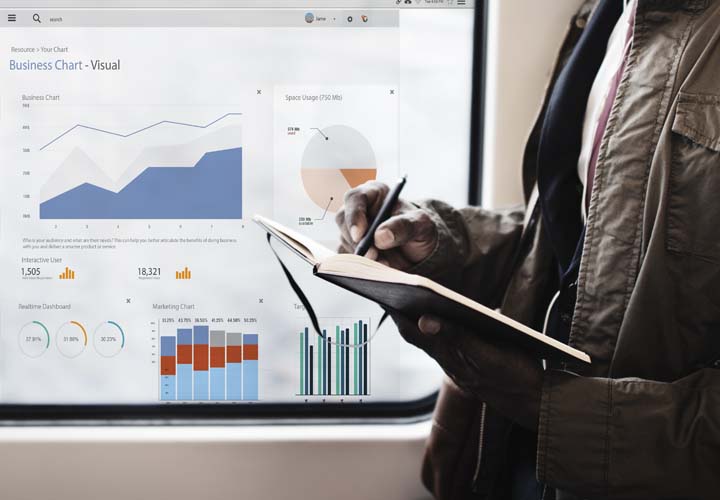



Buy now with a special offer

Business software (or a business application) is any software or set of computer programs used by business users to perform various business functions. These business applications are used to increase productivity, measure productivity, and perform other business functions accurately.
Much business software is developed to meet the needs of a specific business, and therefore is not easily transferable to a different business environment, unless its nature and operation are identical. Due to the unique requirements of each business, off-the-shelf software is unlikely to completely address a company's needs. However, where an on-the-shelf solution is necessary, due to time or monetary considerations, some level of customization is likely to be required. Exceptions do exist, depending on the business in question, and thorough research is always required before committing to bespoke or off-the-shelf solutions.
Some business applications are interactive, i.e., they have a graphical user interface or user interface and users can query/modify/input data and view results instantaneously. They can also run reports instantaneously. Some business applications run in batch mode: they are set up to run based on a predetermined event/time and a business user does not need to initiate them or monitor them.
Some business applications are built in-house and some are bought from vendors (off-the-shelf software products). These business applications are installed on either desktops or big servers. Prior to the introduction of COBOL (a universal compiler) in 1965, businesses developed their own unique machine language. RCA's language consisted of a 12-position instruction. For example, to read a record into memory, the first two digits would be the instruction (action) code. The next four positions of the instruction (an 'A' address) would be the exact leftmost memory location where you want the readable character to be placed. Four positions (a 'B' address) of the instruction would note the very rightmost memory location where you want the last character of the record to be located. A two-digit 'B' address also allows a modification of any instruction. Instruction codes and memory designations excluded the use of 8's or 9's. The first RCA business application was implemented in 1962 on a 4k RCA 301. The RCA 301, mid-frame 501, and large frame 601 began their marketing in early 1960.
Many kinds of users are found within the business environment, and can be categorized by using a small, medium, and large matrix:
The small business market generally consists of home accounting software, and office suites such as LibreOffice, Microsoft Office or Google Workspace (formerly G Suite and Google Apps for Work).
The medium size, or small and medium-sized enterprise (SME), has a broader range of software applications, ranging from accounting, groupware, customer relationship management, human resource management systems, outsourcing relationship management, loan origination software, shopping cart software, field service software, and other productivity-enhancing applications.
The last segment covers enterprise level software applications, such as those in the fields of enterprise resource planning, enterprise content management (ECM), business process management (BPM) and product lifecycle management. These applications are extensive in scope and often come with modules that either add native functions or incorporate the functionality of third-party computer programs.
Technologies that previously only existed in peer-to-peer software applications, like Kazaa and Napster, are starting to appear within business applications.
Chia sẻ sản phẩm này với người khác
Cookie và các công nghệ tương tự được sử dụng trên trang web của chúng tôi để cá nhân hóa nội dung và quảng cáo. Bạn có thể tìm thêm thông tin chi tiết và thay đổi cài đặt cá nhân của mình bên dưới. Bằng cách nhấp vào OK hoặc bằng cách nhấp vào bất kỳ nội dung nào trên trang web của chúng tôi, bạn đồng ý với việc sử dụng các cookie này và các công nghệ tương tự.
Khi bạn truy cập bất kỳ trang web nào của chúng tôi, nó có thể lưu trữ hoặc truy xuất thông tin trên trình duyệt của bạn, chủ yếu ở dạng cookie. Thông tin này có thể là về bạn, sở thích của bạn hoặc thiết bị của bạn và chủ yếu được sử dụng để làm cho trang web hoạt động như bạn mong đợi. Thông tin thường không trực tiếp nhận dạng bạn, nhưng nó có thể cung cấp cho bạn trải nghiệm web được cá nhân hóa hơn. Bởi vì chúng tôi tôn trọng quyền riêng tư của bạn, bạn có thể chọn không cho phép một số loại cookie. Nhấp vào các tiêu đề danh mục khác nhau để tìm hiểu thêm và quản lý sở thích của bạn. Xin lưu ý rằng việc chặn một số loại cookie có thể ảnh hưởng đến trải nghiệm của bạn về trang web và các dịch vụ mà chúng tôi có thể cung cấp.
